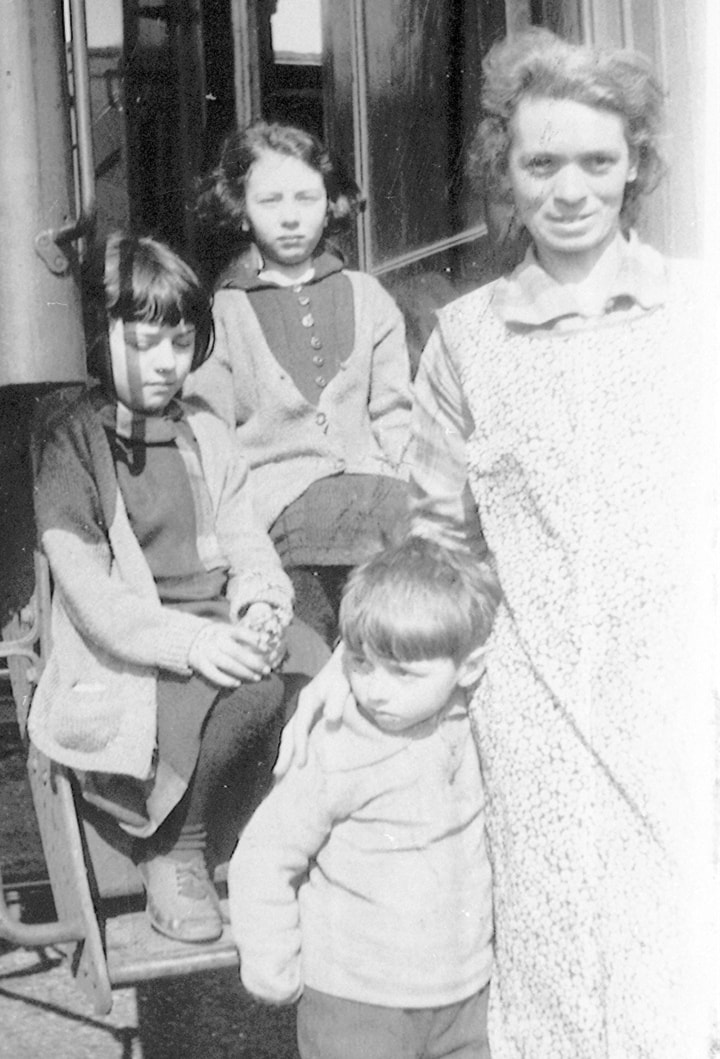All Canadians not of First Nations ancestry are immigrants, or descended from immigrants.
A new country becomes “My Canada” or “My British Columbia” in time.
The Marlow family were no exception to this generalization.
Edward (Ted) Marlow travelled from Hampshire, England, to Canada and the United States around 1910. When the First World War broke out, he returned to England and enlisted in the military. He married, and had three children, before returning to Canada.
Mrs. Minnie Marlow, with children Minnie, Adeline, and Alan joined Ted near Trout Lake in 1929. Son Ed was later born in Arrowhead.
All four siblings spoke with the accent of Hampshire in the 1920s for the rest of their lives.
A deep love of nature grew in the members of this family. Father and sons were loggers. Alan treasured the “big timber” he was surrounded by as a child. He and brother Ed looked out for the little trees too — when they select logged on their property or leased land, they left small trees to grow.
Decades later, Alan could point to the now much larger trees which had grown so well as a result of being left. They were his best proof that selective logging was the way to care for the forest.
As children, with no school nearby, the young Marlows were educated at home. At lesson time, Alan would offer to cut some firewood, knowing his offer could not be refused, and that he therefore would be able to be outdoors, as was his preference. Though he never learned to read or write, he trained his memory.
He became an excellent mechanic by studying drawings while his sister Minnie read the instruction manual to him. Then he’d go out to the machine, and study the actual parts closely. He preferred driving second-hand vehicles, thinking it less wasteful; and knowing he could repair them himself.
Both Alan and Minnie lived beside the road to Trout Lake.
Alan’s was a simple life, with a small carbon footprint. He grew his own vegetables, and generated his own electricity from a nearby stream.
A prospector as well as a logger, he found the molybdenum deposit which became the Newmont Mine near Trout Lake. A friendly welcome and a cup of tea awaited any visitor to Alan’s home.
Minnie’s love of nature and animals may explain why she became a farmer, raising chickens and cows. She was never too busy to watch for “her” goslings each spring — as Canada geese nested by a stream near her house.
That love of nature also caused Minnie to be an environmental activist, opposing clear cutting, slash burning, and pesticide spraying. The sister and brother once spearheaded a group which prevented proposed roadside herbicide spraying by the Ministry of Highways. They watched for the spray truck and alerted the group, which held hands across the gate of the Highways Yard at Trout Lake to keep the truck from leaving it. No spraying was done there that day.
Minnie was happy to talk with passersby who stopped on the road for a visit.
Many local gardens were enriched with manure from her cows. In the later years of Minnie’s life, Alan became her chauffeur, driving her back and forth to her livestock. He looked out for Minnie and his younger brother Ed all their lives.
Alan Marlow, the last living member of this pioneer family, died on Jan. 23, 2017, having been predeceased by his parents and siblings.
His nieces, nephews, and great nieces and nephews mourn his loss.
Alan’s great legacy is a stand of old growth cedars near his home — the Staubert Lake Big Cedars. These 500-to-800 year old cedars are seven to eight metres around at adult eye level.
Where some passersby could only see standing shake wood in these forest giants, Alan saw a living forest, whose trees provided winter bear den sites, or a resting place for a wolf when it was in the area.
His love for these big old trees was audible in his voice when he talked about them.
While Alan and Ed had logged the trees that fell over, they left the big timber for future generations to marvel at, and love.
Alan Marlow’s giant trees are a wonderful legacy for British Columbia, and Canada.
